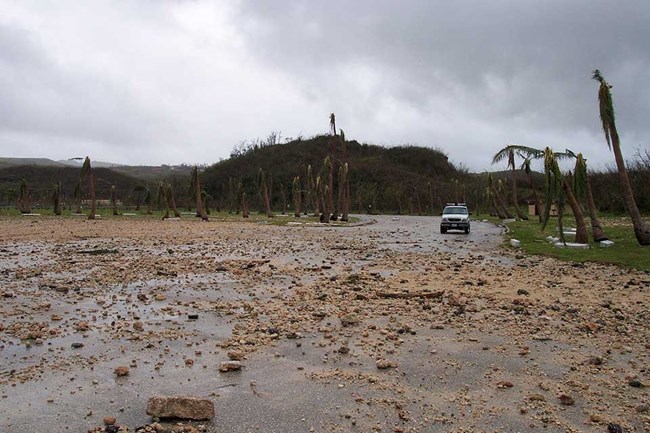
NPS Photo
Changes in Salinity
One major change that has occurred over the last few decades is the amount of salt present in ocean water. In some higher latitude areas in the Northern and Southern Hemispheres, the amount of salt in the water is decreasing, a shift that may be caused by increased rainfall, run-off, and ice melt. In other areas of the world, including large portions of the Atlantic Ocean, the waters are becoming saltier, as a result of increased evaporation, a process that removes water, but leaves salt behind.Though scientists are unsure what the exact causes of these increases and decreases in salt content may be, they are confident that ocean salinity is changing, and will continue to change. As it does, we will see the effects in coastal parks as changes in salinity affect other ocean systems like circulation, currents, and the water cycle. To read more about ocean circulation and climate change in parks, follow the link below about Glacier Bay National Park and Preserve.
Changes in Weather Patterns
Weather patterns are expected to change in a number of ways as a result of human-induced climate change. Severe weather events (such as storms, droughts, heat waves, floods, and more) are expected to become more common and more extreme. The frequency of intense hurricanes may increase. Some regions will receive more rainfall, while others will experience less, leading to floods and droughts. This severe weather may have devastating impacts for many coastal national parks, whose cultural and natural resources are on the front line of destructive events like floods and storms.Scientists also are studying the connection between our warming climate and El Niño – La Niña, the three to five year pattern in the Pacific Ocean of changes in ocean temperature. These changes influence other factors like storms, upwelling, wind and water currents, and precipitation. An El Niño is a time of unusually warm water temperatures in the Pacific Ocean, while a La Niña is characterized by unusually cool temperatures. For eastern Pacific Ocean national parks in Hawaii, California, Oregon, Washington, Alaska, El Niño events are problematic not only for changes bring to ocean environments, but also for their associated extreme weather events and storms. El Niño events can disrupt coastal communities and threaten the breeding and nesting grounds of coastal species such as seals, sea lions, and shorebirds. Climate change may be causing extreme weather events associated with El Niño to become even more extreme, as well as increasing the frequency of El Niño events themselves.
For Further Reading
Hurricane Sandy in National Park SitesU.S. Global Change Research Program
Last updated: February 25, 2025
